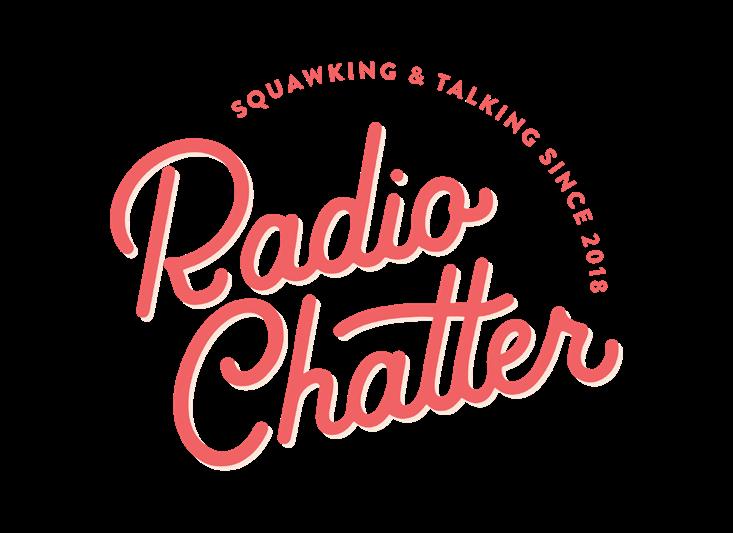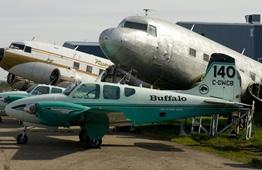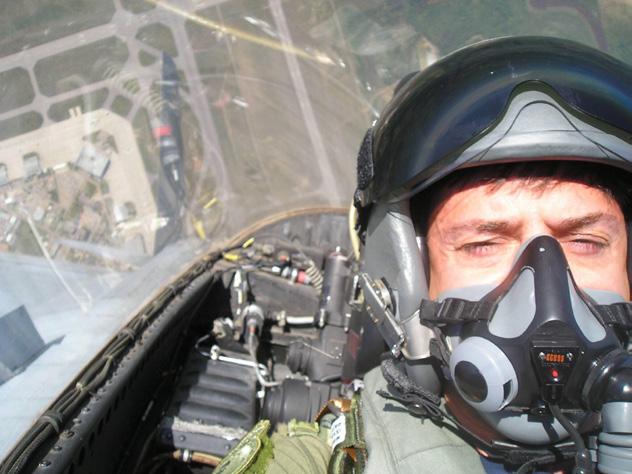The Patrician JUNE 2020
The Victoria Flying Club ~ Aviation Excellence Since 1946
Keeping busy -
read about the good progress with the twin project www.flyvfc.com
1
The Patrician
HANGAR SPACE
“To promote flying and aviation in general, and to teach and train persons in the art and science of flying and navigating and operating all manner of heavier-than-air aircraft.” (Victoria Flying Club Incorporation Bylaws, 1946)
Contact Marcel at the Club to see if a hangar spot is a good spot for your plane and to get on the waitlist.
BOARD OF DIRECTORS
TABLE OF CONTENTS
PRESIDENT Colin Williamson VICE PRESIDENT Don Devenney SECRETARY Jennifer Zadorozniak TREASURER DIRECTORS Iain Barnes John Ainsworth GENERAL MANAGER Greg Matte CHIEF FLYING Mike Schlievert INSTRUCTOR
2
News Around the Club
6
I Learned about Flying from That Contributed by Greg Matte, GM
8 10
Twin Rebuild Project Update What I Learned Interviewing a celebrity at 9000 ft above a mountain Contributed by Mathew Mosveen
CONTACT 1852 Canso Road Sidney, BC V8L 5V5
www.flyvfc.com info@flyvfc.com
P: 250-656-2833 F: 250-655-0910
PARKING Editor: Katy Earl flyvfcmarketing@gmail.com The Patrician accepts unsolicited submissions. This publication may be reproduced in whole or in part, with prior permission of the publisher or author. The opinions expressed are strictly those of the authors.
SUBSCRIPTIONS flyvfcmarketing@gmail.com http://flyvfc.com/subscribe-to-the-patrician
Several parking spaces are available! If you’re interested in prime paved parking spaces for your aircraft, we want to hear from you! Secure, pull-in/pull-out, easy access. Please call Dispatch to arrange a spot, or to see if your plane might fit a hangar spaces at 250-656-2833
PHOTO CREDITS Front cover photo: The 'new' airplane undergoing a rebuild.
2
JUNE 2020
VFC | Aviation Excellence Since 1946
News Around the Club
ON HOLD
COPA Flight 6 meeting and social
ON HOLD
IFR / IMC Round Table
POSTPONED
PrepAIR YYJ at VFC
Is your aviation-related event not listed? Let us know at flyvfcmarketing@gmail.com
NEWS and EVENTS
NEWS and EVENTS
1. Daily open hours 08:00-20:00, with selfdispatch after hours (on a pre-arranged basis). 2. All PPL and School District 61 ground school has been suspended until further notice. 3. Limited flight training has resumed. 4. Masks are now required when training. 5. Redbird simulator training has been resumed. 6. Dual multi-engine/IFR training is slowly resuming. 7. AMO maintenance operations continues.
BYOH - BRING YOUR OWN HEADSET
In order to keep up a high level of sanitation, we are encouraging people to bring their own headsets when renting aircraft. For those unable to do so, there will be a very minor charge ($3) when renting headsets to help cover the cost of cleaning the headset, as of June 1st.
ONGOING CHANGES AT CLUB DUE TO COVID-19
The following is an update on the current and temporary arrangements at the Club. You can also look for the Interim Policies linked to on our website in the COVID-19 Update box, pictured below:
8. Recreational rentals continues. 9. Sightseeing flights have been discontinued. 10. Solo advanced training / rentals on the Cessnas (i.e. to build CPL hours) continues. 11. Support to VFC members (parking, towing, refueling, etc.) continues. 12. Dispatch services (08:00-20:00 daily) continues. 13. Take-out services with the Dakota CafÊ restaurant continues (Mon–Fri, 08:00-16:00, SatSun 08:00-14:30) and the restaurant and patio (limited seating) is now open.
DISCOUNT: LIFE MEMBERSHIPS
In light of a sharp decline in revenue due to COVID-19, the Board of Directors recently approved a 20% discount for eligible members interested in applying for a lifetime membership. The new cost (including tax) is $1,218.00. This is a savings of $309.50 off the previous cost (including tax) of $1,527.50. (continued on next page)
www.flyvfc.com
3
EVENTS
NEWS and EVENTS
As can be expected, the vast majority of aviation events this summer have been canceled or postponed. Difficult times can bring other opportunities to the fore, however. Two have been copied on these pages, screenshot from: http://www.gearbots.org/summer-camps/ https://www.bcaviation.ca/fly-out-garbage-for-avgas. html
4
JUNE 2020
If you would like a hand publicizing your event, send it to flyvfcmarketing@gmail.com for a chance to have your news or story published in The Patrician.
VFC | Aviation Excellence Since 1946
NEWS and EVENTS
Taken from https://www.bcaviation.ca/fly-out-garbage-for-avgas.html
www.flyvfc.com
5
I Learned about Flying from That GM Corner
VFC Manager BGen (Ret’d) Gregory C.P. Matte, CD, PhD
Last month, I addressed the perishability of our pilot skills, and the importance of recognizing our limitations in terms of both our training and our currency. Given that we are working hard to reinvigorate the VFC’s advanced multi-engine/IFR training by bringing the Piper Seminole back on line (awaiting an engine change) as well as with the ongoing rebuild project on our Beechcraft Travel Air 95, I wanted to focus on the importance and enjoyment of instrument flying. The perishable nature of our flying skills requires continuous practice of the basics to ensure that we remain safe and effective as aviators. In a way, the nature of this perishability is captured in the simple truism of "use it or lose it." In addition to remaining proficient in the basic flight skills in VMC conditions (e.g. PFLs, stall recovery, etc.), is the ability to retain a basic proficiency on instruments. Arguably, these should be embraced as “life skills” for pilots, similar to teaching children how to tread water and swim at a young age. As a minimum, such basic instrument flying skills would include the ability to maintain straight and level flight, to safely execute a turn in IMC conditions without stalling, and to recover from “unusual attitudes” to avoid losing control of one’s aircraft.
6
JUNE 2020
Far too many pilots have met a tragic outcome when they inadvertently found themselves in unexpected IMC conditions on what had planned to be a VFR flight. The sudden development of a fog bank, when the temperature / dew point spread is only a degree or two apart, is not uncommon in our flying area due to the land-sea interface and numerous, localized microclimates. Night VFC is even more insidious, as it’s far more difficult to see lowering cloud ceiling or the development of mist or fog in advance of our flight path. One only needs to reflect on the accident investigation following the tragic deaths of John Kennedy Jr., along with his wife and sister-in-law, on the fateful evening of July 16, 1999 off the coast of Martha’s Vineyard. He did not have an instrument rating, and found himself in deteriorating, night VMC conditions, and likely became spatially disoriented prior to losing control of his Piper Saratoga. While a basic introduction to instrument flying is part of PPL training, and becomes the focus of multi-engine IFR training, this is a skill that should be given particular attention to ensure one retains the necessary competence and confidence to deal with unexpected,
deteriorating weather conditions in flight. When I was the Wing Commander of 4 Wing Cold Lake, despite having well over 2000 hours on the CF-18 as well as Top Gun training and previous qualifications that included “mass attack lead” (meaning the demonstrated ability to plan and lead an air armada of dozens of mixed-type aircraft on a coordinated combat mission), I was only able to fly once a week at best. As such, I sadly witnessed the decline in my tactical abilities on the CF-18 as well as my overall flying skills. In recognition of this the simulator became an ally, and I would routinely “hop in the sim” (when my busy schedule permitted) to practice the basics; namely emergency procedures and IFR approaches. For those who are embarking upon their ME/IFR training, or who are part way into seeking their rating, I would be remiss not to emphasize the many positive benefits of such training. I always enjoyed flying “on the dials” as I found it would allow me to continuously hone my flying skills as measured by the precision of my altitude control, airspeed management and effectiveness of my approaches. I also found it to be the ultimate test of developing spatial awareness; the ability to not only “fly the dials” but also to have an accurate mental picture
VFC | Aviation Excellence Since 1946
of my 3-dimensional positioning in the airspace, whether in transition terminal airspace, entering a hold, or executing an approach.
GM Corner
With time and practice a pilot becomes increasingly adapt at flying the aircraft accurately allowing for apportioning greater attention to spatial awareness / cognition of one’s movement in the airspace, around hazards, through the incorporation of both off-board navigational aids as well as onboard navigational tools (INS, GPS, FMS, etc.). There is a great deal of satisfaction in achieving the culmination point of IFR training where one successfully combines their knowledge of the IFR rules and regulations, instrument flying skills, and spatial orientation with the challenge of shooting an approach to an unfamiliar airport and “pinning” the ILS localizer and glide path all the way to minimums and a safe landing. Add on the occasional in-flight practice emergency to draw one out of one’s comfort zone, and this further contributes to a pilot’s confidence, competency and airmanship. For those seeking to move “onwards and upwards” to obtain their ATPL and a career as an airline pilot, such recurring training in a high fidelity simulator will become an essential part of maintaining your currency. The bottom line is that in addition to maintaining currency with one’s basic VFR flying skills, with or without an instrument rating, it’s important to maintain one’s capability and confidence to “fly the dials”, as it truly is a lifesaving skill for all pilots. The Redbird is a safe and effective way to maintain such skills, but flying “under the hood” with a Flight Instructor is even better. With HDP coming back on line for ME/IFR training, now is the time to book the Redbird in advance of advanced flight training in the air.
www.flyvfc.com
7
Twin Rebuild Project Update Contributed by VFC President and Accountable Executive Colin Williamson
VFC News
On May 19th, our twin engine plane (currently C-GWCB) that we are going to completely rebuild arrived from Alberta. That was a bit later than hoped for but we needed good weather through the mountains to safely transport it and had to wait a bit for that. Once here at VFC its former owner Dave, and two of our staff, Cody and Murray, got to work unloading it. This was quite an involved process as great care needs to be exercised in moving large components to ensure they don’t get damaged, and to ensure those large components (wings, fuselage) don’t get bumped into the other planes in the hangar. Some good teamwork with Murray driving the forklift and Cody and I acting as spotters kept everything safe. Along with the acquisition of WCB, Murray negotiated
8
JUNE 2020
receiving several boxes of spare parts and even an entire second airframe that we can use as a parts plane. This will save us large amounts of money down the road and enable us to quickly perform our own in-house repairs when needed. There was a lot of prep work that went into getting the project ready to start. Murray acquired two sea cans (large metal shipping containers) that we will use as additional storage. This has enabled us to clear out some of the hangar to make room for the project work. We have also acquired a new air compressor. The old one was getting unreliable, was very noisy, and could only support one tool at a time. The new one is much quieter (better workplace safety) and can power
three tools at a time improving productivity not just for the project plane but for all of our maintenance work. Our Maintenance staff are now busy working on the project. The aircraft will be completely disassembled and all parts carefully inspected. Depending on their condition they will either be re-used, repaired or replaced. So far it's good news. The aluminum airframe components that have been inspected are in excellent condition. WCB spent most of its life in the far North. We all know it is cold up there but it is also extremely dry, limiting issues with corrosion. Clearly there is a lot of work involved in restoring an aircraft. We expect to have it ready for students to use for instruction in the fall. It is not possible to pin down the schedule entirely accurately since it will be affected by the condition of the parts and the amount of work they need to bring them up to excellent condition. The schedule is also affected by the amount of work put on our staff keeping our existing fleet in the air. We will keep you posted with the progress of this exciting project both here in the Patrician and on Facebook and Twitter.
VFC | Aviation Excellence Since 1946
President Corner
May 19th, our planes arrive from Alberta. You are not seeing double, there are two fuselages on the trailer. The one in the foreground is for spare parts. Note the freshly overhauled C-172 engine off to the right of this photo in the back of our pickup truck based test bed. Murray operates the forklift truck with assistance from Cody to get a fuselage off the trailer. Many thanks to Victoria Air Maintenance for the loan of the forklift truck.
Anyone who has watched Ice Pilots knows Buffalo Airways, the former owner of the plane. Griffin hard at work disassembling the instrument panel of WCB. The entire panel will be replaced by a new one with the sheet metal being fabricated by Victoria Air Maintenace so that it can accommodate the new glass cockpit components and modern avionics.
Meanwhile, our Cessna 172s still need maintenance. Al is busy here installing an engine into JZB that he has just finished overhauling. After a complete overhaul the engine fired up instantly and then ran beautifully. Al’s workmanship is absolutely first class. Murray busy stripping paint off the wing. This is an essential but time consuming job. Not only does it get rid of the old paint but it allows for a proper inspection of the metal.
www.flyvfc.com
9
What I Learned
Interviewing a celebrity at 9000 ft above a mountain Feature Article
Contributed by Mathew Mosveen
What could be more exciting than a flight over the snowy mountain peaks of Strathcona Provincial Park? How about throwing a rockstar in the mix. As pilots, it’s dangerously easy to forget just how magical it is to do what we do. Consider finding a snag during your walk around and learning you’ll be delayed by 45 minutes while waiting for the next aircraft to become available… or not getting the departure you wanted because PASCO is inbound and beat you to the request. It’s easy to lose sight of how crazy it is to think that you’re about to find yourself hurtling through the air 9,000 feet above the earth at 110 knots for no other reason than to access natural beauty that would have otherwise been practically inaccessible to humanity if not for a herculean effort to achieve what was previously thought to be impossible just over a century ago. Luckily, for those who don’t find themselves head down in VNCs and NDBs quite as often as we do, this perspective comes a little more naturally. I bet if you talked to a celebrity, you’d find a pretty similar sentimental desensitization. I can’t imagine an artist’s favourite aspect of the job to be contract negotiations with record labels, or fighting to retain creative direction on a passion project. But then again, surely it’s worth it to experience the thrill of reciprocating electrifying blues-
10 JUNE 2020
rock infused energy with thousands of screaming fans. While it may be our duty to prioritize safety above all else, I’m grateful that Jesse Roper was able to remind me to go back to basics once we’d filed our flight plan and done our checklists. When I was given the opportunity to take Jesse flying over one of his favourite mountain ranges, I immediately knew the flight was going to be special for a number of reasons. Not only did it represent the first episode I would shoot for my airborne talkshow, Radio Chatter, but it was finally the excuse that both Jesse and I were looking for to experience Vancouver Island’s tallest mountain: the Golden Hinde. Both Jesse and I want to climb the Hinde one day, and May 30th, 2019 (this was filmed one year ago, we’re all respecting social distancing practices this May) allowed us to conquer the mountain in a very special way. We recorded an incredible interview shot over breathtaking vistas and during those moments, it became clear that not even a rockstar is immune to the thrill of flight.
ABOUT RADIO CHATTER
Radio Chatter is an airborne interview talk show hosted and produced by Mat Mosveen featuring guests answering unique questions over breathtaking views. Jesse Roper’s episode is tentatively slated for release on Thursday, June 25th, 2020 at 4PM PST on Youtube - please follow for updates. Here is the YouTube channel link: https://bit.ly/RCPat Instagram: @RadioChatterShow Facebook: @RadioChatter Twitter: @RadioChatterSho Please note: This episode was filmed on May 30, 2019 (1 year ago). Editing removes context – all radio calls are made, checklists complete, and aviation laws adhered to during production. Interview content is captured during non-critical phases of flight in uncontrolled airspace with very little air traffic while maintaining a vigilant traffic lookout and close listening watch on the radio.
So is crowd-surfing among 9,000 adorning fans what freedom feels like? Or is it cloud-surfing at 9,000 feet among the snowy peaks in central Vancouver Island? Well, at least Jesse is one step closer to answering that question.
VFC | Aviation Excellence Since 1946
Feature Article
www.flyvfc.com
11
12 JUNE 2020
VFC | Aviation Excellence Since 1946



